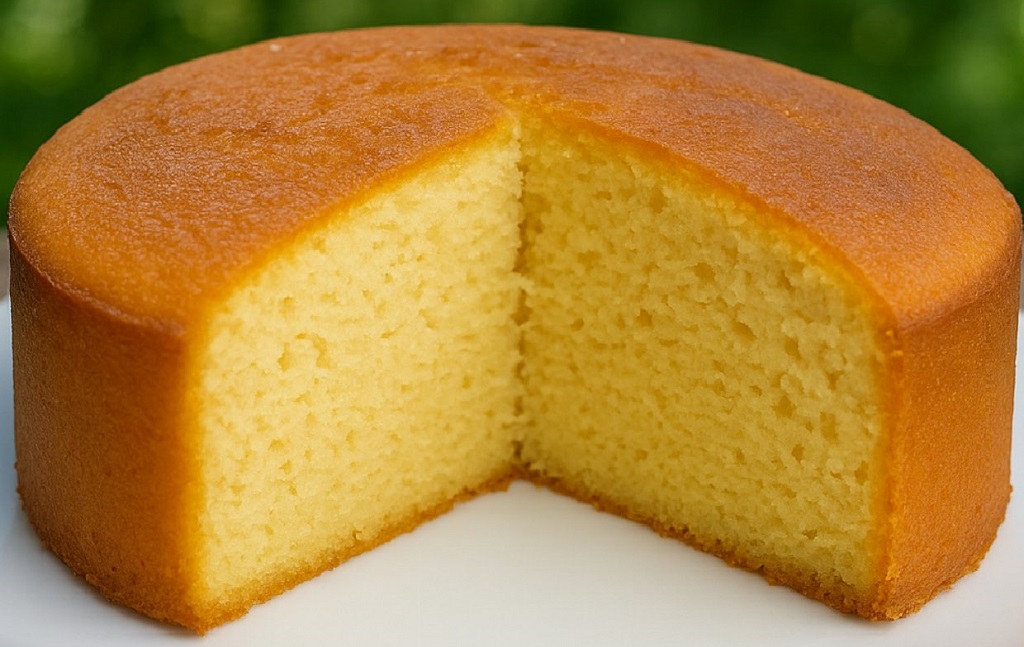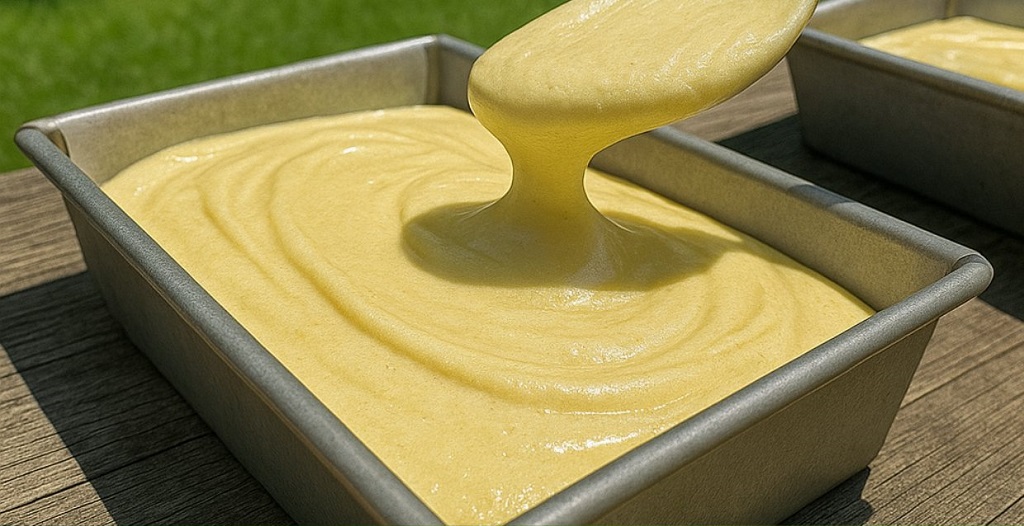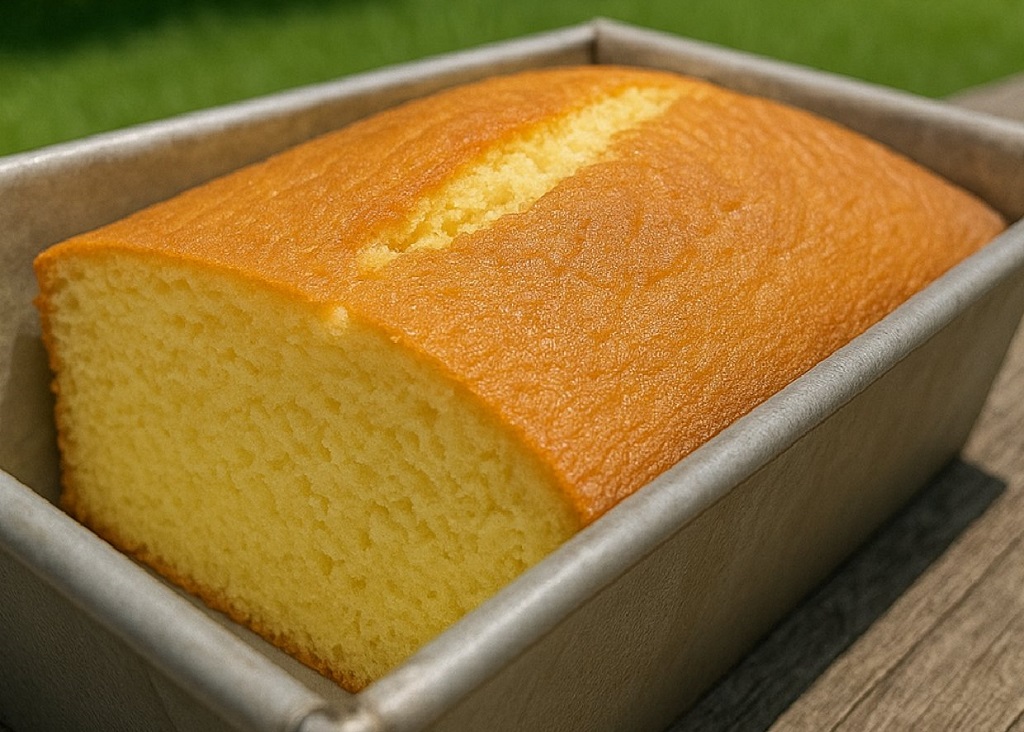I’ve baked hundreds of cakes in my career, but just eight words into this post, I’m confident I’ve found the one: soft butter cake recipe. There’s something unbeatable about a rich, golden, buttery cake that’s both simple and elegant. This recipe is a cornerstone of my kitchen it’s light yet rich, soft yet structured, and works every single time whether I serve it as is or dress it up with toppings.
“A cake so soft, it practically sighs when you slice it pure butter bliss.” – @ChefNextDoor
Why This Butter Cake Never Fails Me
Every baker needs a foundational cake one that’s reliable, fast, and loved by everyone. For me, that’s this soft butter cake recipe. The ingredients are basic pantry staples, but the technique brings them together into something that feels indulgent, even without frosting. Whether I’m baking for a family dinner or prepping slices for a styled dessert tray, this cake earns rave reviews.
- Just 6 main ingredients: All pantry basics, nothing fancy
- Moist, soft crumb: Thanks to cake flour and the perfect butter ratio
- Fast prep: Takes under 15 minutes to get in the oven
- Versatile: Dress it up with fruit, cream, or glaze or eat plain
It’s the same simplicity I love in recipes like moist butter cake or vanilla pound cake. Simple methods, unforgettable results.

Ingredients You’ll Need
- 1 3/4 cups (230 g) cake flour – gives a delicate texture
- 1/2 tsp baking powder – light rise, nothing too fluffy
- 1 cup (250 g) unsalted butter – room temperature is key
- 1 cup (200 g) castor sugar – melts beautifully for a smooth crumb
- 4 large eggs – structure and richness
- 1 tsp vanilla extract – optional, but I recommend it
- 1/4 cup (60 ml) milk – adds moisture to balance the butter
Always use room temperature ingredients it ensures a smoother batter and a more even rise. I pull my butter and eggs out at least 30 minutes before starting.
How I Make This Soft Butter Cake Step by Step
1: Prep the Pan and Oven
- Preheat the oven to 350°F (180°C).
- Grease an 8 inch round or loaf cake pan and line with parchment if needed.
2: Sift the Dry Ingredients
- In a medium bowl, sift the cake flour and baking powder together. Set aside.
3: Cream the Butter and Sugar
- Using a hand mixer or stand mixer, cream the butter and sugar on medium speed until light, pale, and fluffy. This takes about 3-4 minutes and adds air for softness.
4: Add the Eggs One at a Time
- Add each egg one at a time, beating well after each addition. Scrape down the sides to keep the batter even.
5: Mix in Vanilla
- Stir in the vanilla extract. This step is optional but adds depth of flavor.
6: Combine the Batter
- Alternate adding the sifted dry ingredients and milk to the batter. Start and end with flour this keeps the batter emulsified and prevents curdling.
- Mix gently just until combined. Do not overmix or the cake may turn dense.
7: Bake
- Pour the batter into the prepared pan. Tap gently to release air bubbles and smooth the top.
- Bake for 30-35 minutes, or until a toothpick inserted into the center comes out clean.
8: Cool
- Let the cake cool in the pan for 10 minutes, then turn out onto a wire rack to cool fully.
“Overmixing is the biggest butter cake sin once the flour goes in, be gentle and swift.” – @FlourWhisperer

My Chef Tips for a Flawless Butter Cake
- Room temp is king: Cold butter or eggs will break your emulsion and ruin the rise
- Cream properly: Don’t rush the butter and sugar step it builds the structure
- Use the right pan: A dark pan browns faster use light metal for even color
- Don’t open the oven: Wait until 25 minutes have passed or it may collapse
This is the kind of cake I bake when I want something reliable yet elegant. Just like my vanilla sponge cake, it can go from weekday dessert to celebration centerpiece with the right finishing touches.
Why This Soft Butter Cake Recipe Works Every Time
When I say this soft butter cake recipe never fails, I mean it. Whether I’m baking it for a quick afternoon snack or dressing it up for an event, the texture and flavor stay consistent. That’s because the science behind it is solid: the creamed butter traps air, the eggs add richness, and the cake flour keeps the crumb tender. It’s not just a recipe it’s a reliable method I’ve returned to for years.
- Perfect balance of moisture and structure: The butter, eggs, and milk ratio ensures softness without being greasy
- Even rise: Just enough baking powder gives height without doming or sinking
- Flavor first foundation: The simplicity allows vanilla, citrus zest, or toppings to shine
Honestly, it’s the same kind of balance that makes recipes like moist butter cake and lemon milk cake so popular rich but never overpowering, soft but never crumbly.
Simple Ways to Elevate This Butter Cake
Once you’ve mastered the base, this cake becomes a blank canvas. Here are my favorite ways to customize it without losing the texture:
- Lemon zest and glaze: Add 1 tbsp lemon zest to the batter and top with a powdered sugar lemon juice glaze
- Almond extract: Swap half the vanilla with almond extract for a more complex aroma
- Layered with jam: Slice horizontally and fill with berry preserves and whipped cream
- Topped with fruit: Bake in a tart pan and top with thin apple slices before baking
These tricks remind me of how I tweak Japanese cheesecake it’s soft and adaptable to any flavor profile, whether classic or bold.
How I Store and Freeze This Butter Cake
If you manage to have leftovers (rare in my kitchen), this soft butter cake keeps well. Here’s how I handle storage without losing that fresh baked texture:
- Room temperature: Store in a cake dome or airtight container for up to 3 days
- Refrigerated: Wrap tightly and refrigerate for up to 5 days. Let it come to room temperature before serving
- Freezer: Slice and wrap each piece in cling film, then place in a freezer safe bag or container. Good for up to 2 months
- Reheating: Warm in the microwave for 10-15 seconds to bring back moisture
This technique is the same one I use for storing condensed milk bread or milk buns wrap, seal, and warm gently.
“I freeze individual slices and pop them in the toaster oven for an instant cake fix it’s just as good reheated!” – @KitchenPrepPro
What Can Go Wrong (And How to Avoid It)
Even a classic like this soft butter cake can be tricky if you’re not careful. Here are some problems I faced early on and how to solve them:
| Issue | What Went Wrong | How to Fix It |
|---|---|---|
| Dense, greasy crumb | Butter wasn’t creamed long enough | Cream for at least 3-4 minutes until pale and fluffy |
| Curdled batter | Eggs too cold or added too quickly | Use room temp eggs and add one at a time |
| Sunken center | Oven temp too low or opened too early | Preheat oven fully and don’t open the door before 25 minutes |
| Dry cake | Overmixed or overbaked | Mix until just combined and check doneness at 30 minutes |
Once you lock in the technique, this cake becomes virtually foolproof. It’s more consistent than many sponge or chiffon cakes and way easier for beginners to master.
“Your mixer is your best friend in this cake just don’t overstay your welcome once the flour goes in.” – @CakeCraftChef
Frequently Asked Questions About Soft Butter Cake Recipe
What is the difference between cake flour and all purpose flour?
Cake flour has a lower protein content, which makes baked goods softer and more tender. For this soft butter cake recipe, using cake flour ensures the lightest texture. If you don’t have cake flour, substitute with all purpose flour minus 2 tablespoons per cup and replace with cornstarch.
Can I use salted butter instead of unsalted?
Yes, but reduce the added salt (if any) in the recipe. I prefer unsalted butter so I can control the salt level precisely, especially in cakes where subtle flavors matter.
How do I know when the cake is fully baked?
The top should be golden and a toothpick inserted into the center should come out clean or with just a few moist crumbs. You’ll also notice the cake starts to pull slightly from the edges of the pan.
Why is my cake dry?
Most commonly, it’s overmixed or overbaked. Always mix only until combined once the flour is added, and test for doneness a few minutes before the recommended bake time ends.
Can I add mix ins like chocolate chips or nuts?
Absolutely. Fold in about ½ cup of your favorite additions chopped walnuts, chocolate chips, or even dried cranberries right before pouring the batter into the pan. Avoid overmixing when adding them.
Want more comfort bakes and reliable classics? Follow me on Facebook for daily recipes, baking tips, and chef level guidance brought straight from my kitchen.
